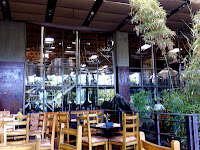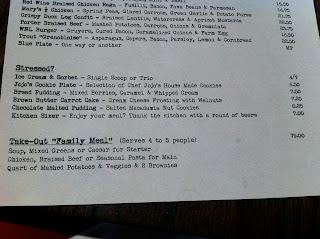.JPG) As a junior in college I
took a history seminar called "Doing History." We read a bunch of
seemingly disparate texts: Sartre, Hume, Whorf, Remembering Ahanagran, Kuhn. At the end of the course,
perhaps too predictably, we each wrote a history of the course from our own
perspective. As it turns out, this course was more about post-modernism than about
archives.
As a junior in college I
took a history seminar called "Doing History." We read a bunch of
seemingly disparate texts: Sartre, Hume, Whorf, Remembering Ahanagran, Kuhn. At the end of the course,
perhaps too predictably, we each wrote a history of the course from our own
perspective. As it turns out, this course was more about post-modernism than about
archives.In fact, I have never taken, nor had the opportunity to take, a course on archival research. Rather, doing history seems to be something you intuitively figure out. Through years of graduate coursework, if you read enough history books and examine the footnotes closely, you can figure out how it works.
By taking a feminist research methods class this past semester, I learned that historians aren't very good at describing what they "do." I searched and searched for articles about historical methods (preferably feminist historical methods, but not necessarily). I found bits and pieces in introductions. I discovered footnotes that referenced sections in the authors' dissertation (ILL purgatory). I became lost in arguments about the cultural/linguistic turn and what "deconstructing" text really means. Beyond the theoretical arguments, I did not find much about what historians do in the archives. Perhaps historians should become better at this; it might help them acquire funding grants.
Taking a break from hours spent scanning PDFs of microfilm and looking through interesting, but potentially useless documents, I went to dinner. Segue to food blog...
.JPG) Tuesday night I went to Mission Chinese Food. I cannot
take credit for finding out about this place. Longer story very short, the
widely popular restaurant from San Francisco opened a location in the Lower
East Side. A pretty small place, we sat at the four-person bar in the back.
Well, all the seating is in the back. However, if you end up waiting for a
table, they do offer free crap beer from a keg on ice.
Tuesday night I went to Mission Chinese Food. I cannot
take credit for finding out about this place. Longer story very short, the
widely popular restaurant from San Francisco opened a location in the Lower
East Side. A pretty small place, we sat at the four-person bar in the back.
Well, all the seating is in the back. However, if you end up waiting for a
table, they do offer free crap beer from a keg on ice. I took photos of all four dishes. Unfortunately, it looks liked I tried to use some hipstamatic red filter to make everything look cool. I'll only post one photo because they are painfully inadequate.
.JPG) The food, however, was in
the food-sex realm. The standout, must-eat-every-last-fatty-bit, dish, was the
Kung Pao Pastrami. The "explosive chili" element made my tongue feel
awesomely numb, the fat at the bottom of the dish was a pleasant reminder of
the pastrami long since eaten, the celery was refreshingly crisp, and the
peanuts added something to the mix. I can see how people might react poorly to
the Sichuan peppercorns (actually, we saw a person react poorly), but I think
the dish was the perfect combination of flavors and textures. The other dishes,
Sichuan Pickled Vegetables, Chilled Buckwheat Noodles, and Stir Fried Sweet
Peas, were also terribly satisfying. Everything was well cooked with bright and fresh
flavors.
The food, however, was in
the food-sex realm. The standout, must-eat-every-last-fatty-bit, dish, was the
Kung Pao Pastrami. The "explosive chili" element made my tongue feel
awesomely numb, the fat at the bottom of the dish was a pleasant reminder of
the pastrami long since eaten, the celery was refreshingly crisp, and the
peanuts added something to the mix. I can see how people might react poorly to
the Sichuan peppercorns (actually, we saw a person react poorly), but I think
the dish was the perfect combination of flavors and textures. The other dishes,
Sichuan Pickled Vegetables, Chilled Buckwheat Noodles, and Stir Fried Sweet
Peas, were also terribly satisfying. Everything was well cooked with bright and fresh
flavors. Overall, the meal was the perfect antidote to a bit of archival wanderlust. After all, there’s always another day in the archive.
Mission Chinese Food
154 Orchard Street
New York, NY 10002
212-529-8800





























.JPG)





.JPG)
.JPG)
.JPG)
.JPG)
.JPG)
